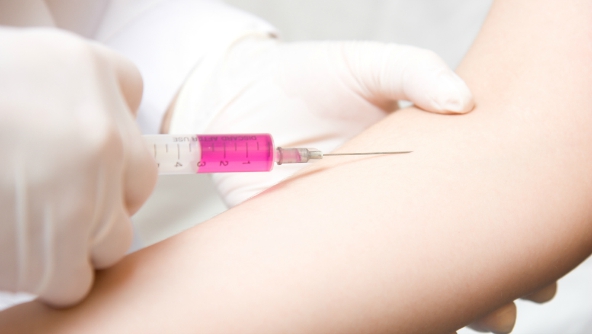Every August, National Immunization Awareness Month (NIAM) sets out to inform Americans about vaccinations that are critical for safeguarding health. NIAM emphasizes the value of immunization not only during childhood, but over the course of a lifetime, and has cited data showing that the majority of adults, whose jobs don’t require immunizations, overlook recommended vaccinations – putting them at greater risk for serious diseases.
The NIAM 2015 toolkit, offered for download from the National Public Health Information Coalition (NPHIC) in collaboration with Centers for Disease Control and Prevention (CDC), summarizes the threat of vaccine-preventable illnesses among adults:
“Every year, thousands of adults in the U.S. suffer serious health problems, are hospitalized and even die from diseases that could be prevented by vaccines,” it states. “For example, in 2013, there were about 30,000 cases of invasive pneumococcal disease and 3,400 deaths among adults ages 19 and older. In addition, about 1 million cases of shingles and millions of cases of influenza occur each year in the U.S.”
The Role of Vaccination in the Workplace
When adults don’t receive recommended vaccinations it can have negative consequences for workplaces in all industries, leading to missed workdays and diseases spreading to other employees.
Healthcare workers are advised to be especially mindful about staying on top of key vaccinations because of their increased level of exposure to diseases and hazardous bloodborne pathogens such as HIV, hepatitis B virus and hepatitis C virus. You can find the list of recommended vaccines for healthcare workers here.
CDC estimates that 5.6 million American healthcare workers are at risk for exposure to bloodborne pathogens. This includes not only physicians and nurses, but also emergency medical personnel, dental professionals, laboratory technicians, pharmacists, hospital volunteers, and administrative staff.
According to CDC, “Healthcare workers are at risk for exposure to serious, and sometimes deadly, diseases. If you work directly with patients or handle material that could spread infection, you should get appropriate vaccines to reduce the chance that you will get or spread vaccine-preventable diseases.”
These dangers are particularly widespread in the healthcare industry, but taking key steps can protect workers’ health – not only through vaccination, but through training as well. Having the proper training program in place can ensure workers are taking the necessary precautions to prevent infection. OSHA’s Bloodborne Pathogens Standard requires that employers with employees exposed to bloodborne pathogens have an exposure control plan in place, including a training component.
MSDSonline offers a training course titled “Bloodborne Pathogens” to help employers keep workers safe from these hazards. The course covers procedures that will help minimize health risks for workers at risk for exposure to blood and other potentially infectious materials. Coverage includes: recognizing hazards; identifying modes of transmission; standard precautions; appropriate engineering controls; work practices, and PPE for preventing exposure; and emergency procedures for handling incidents involving exposure.
Recommended Vaccines for Adults
According to the NIAM materials, many adults are aware of the importance of immunization, but think of it as mostly necessary for children and don’t realize they need certain vaccines.
“Even if you were fully vaccinated as a child, you may be at risk for other diseases due to your age, job, lifestyle, travel, or health condition,” the materials say. “All adults need vaccinations to protect against serious diseases that could result in missed work, severe illness requiring medical treatment or even hospitalization, and not being able to care for family.”
The NIAM toolkit highlights the following vaccines for adults, and notes CDC data indicating that immunization rates are well below what’s recommended.
Influenza (flu) vaccine
- Recommended annually for everyone 6 months and older
- Only 42 percent of adults 18 and older received the vaccine during the 2013-2014 flu season
Tetanus/Tdap vaccine
- Recommended for adults 19 and older who did not get Tdap as an adolescent to protect against tetanus, diphtheria, and pertussis (whooping cough), and for pregnant women (ideally during the third trimester). Adults are advised to get a TD booster every 10 years
- According to data from 2013, only 17 percent of adults had received the vaccine
Shingles (Herpes Zoster) vaccine
- Recommended for adults 60 and older
- Without vaccination, 50 percent of people who live until 85 will get shingles
- According to data from 2013, only 24 percent of adults 60 and older received the vaccine
Pneumococcal vaccine
- Recommended for all adults 65 and older and adults 19 and older with specific health conditions (such as a weakened immune system), to protect against diseases such as pneumonia and meningitis
- According to data from 2013, only 21 percent of adults 19 to 64 at high risk received the vaccine
Other vaccines – such as hepatitis A and hepatitis B vaccines – are recommended for adults in certain situations, such as when traveling to specific countries or when lifestyle or occupational factors put them at greater risk for infection.
You can find CDC’s detailed overview of adult vaccination recommendations (as well as recommendations for young children and teenagers) here.







